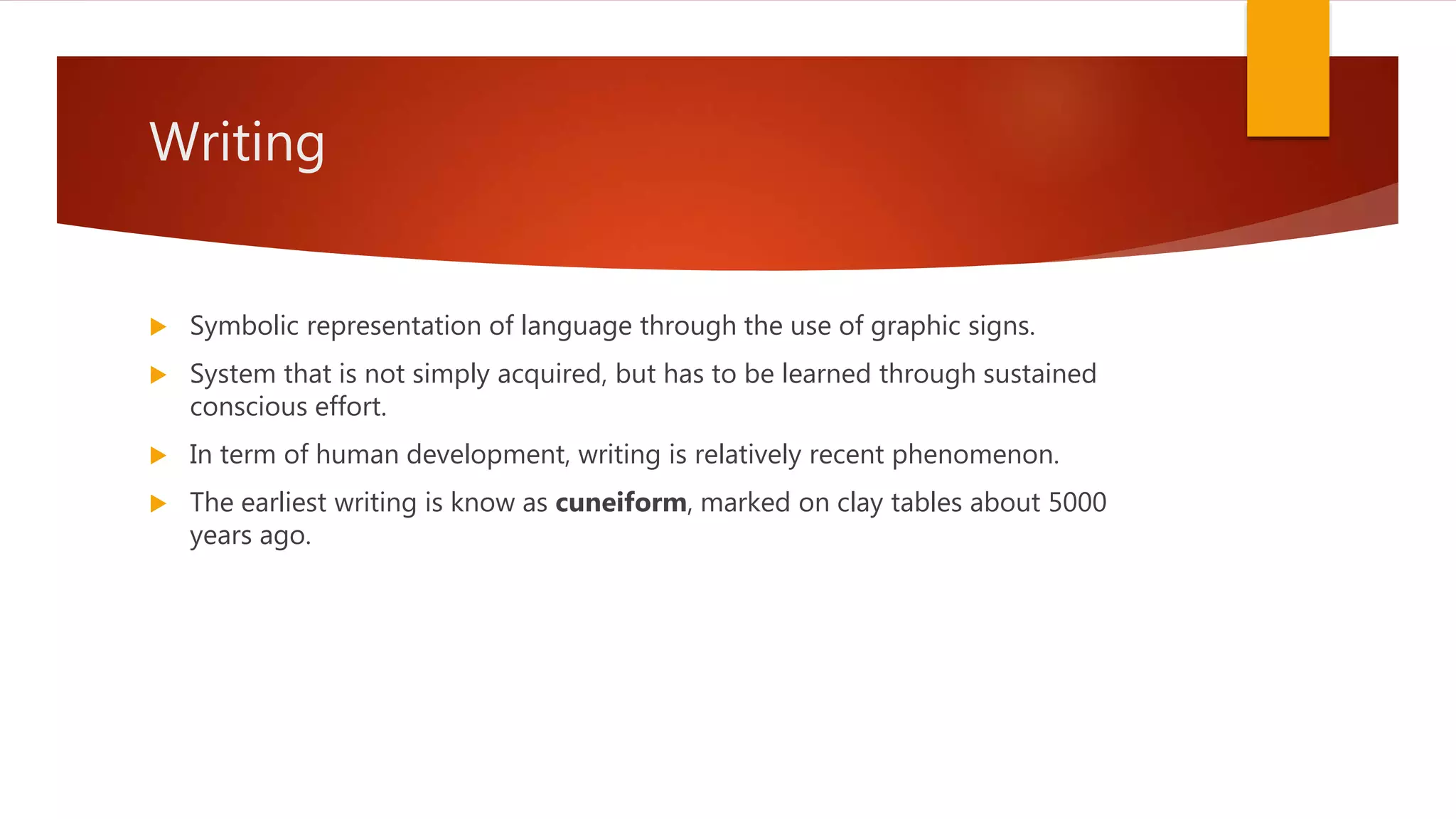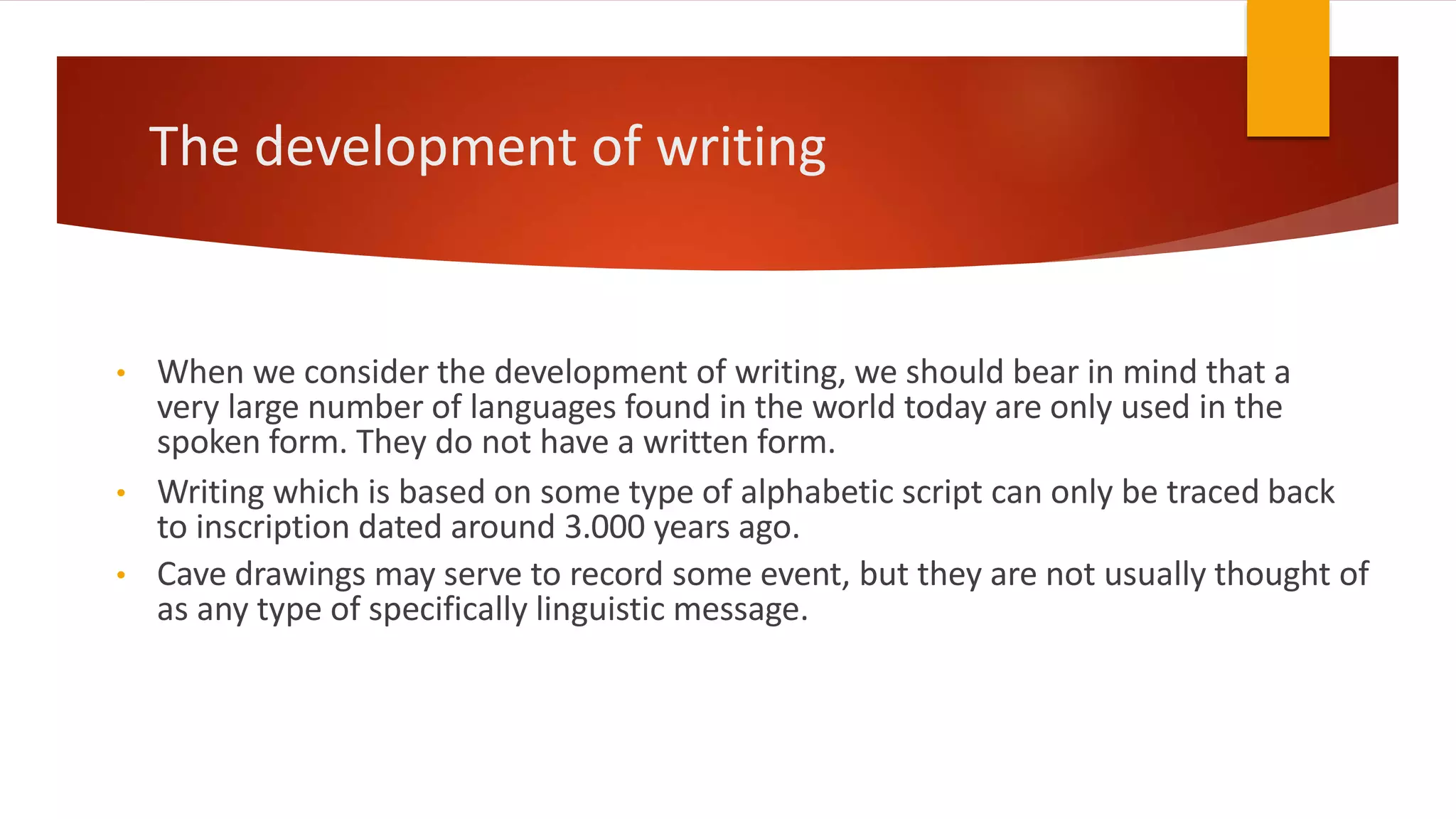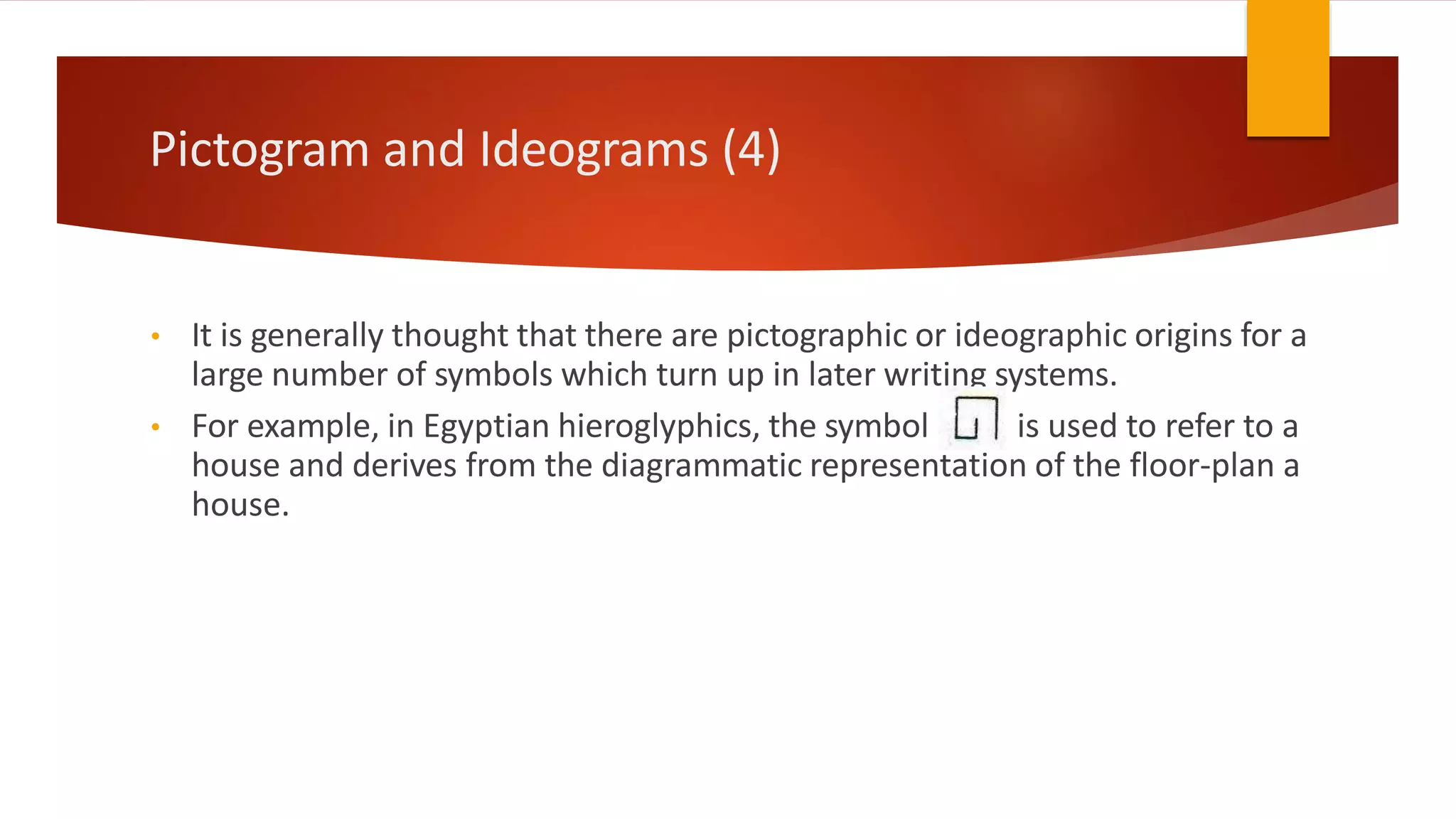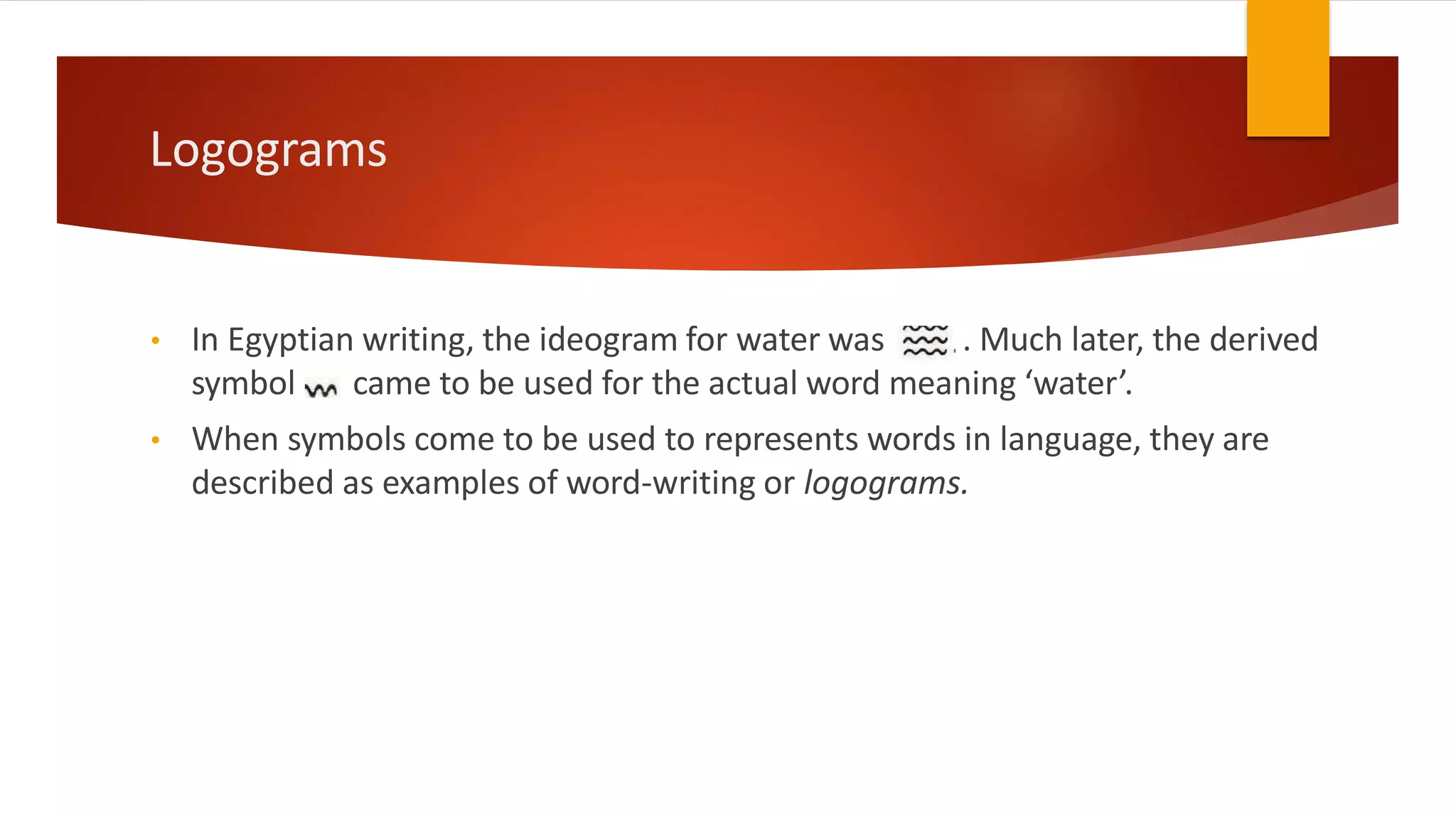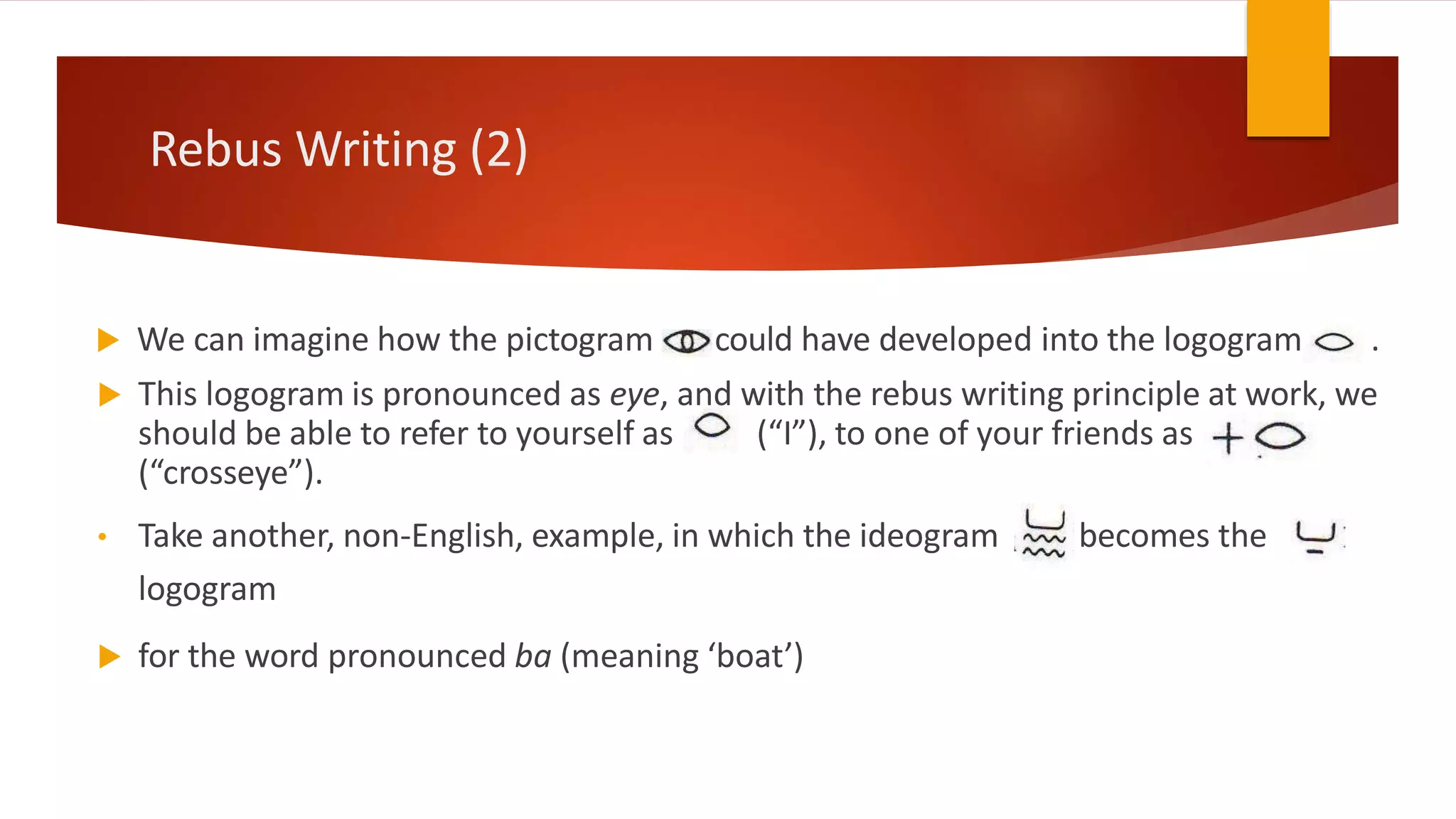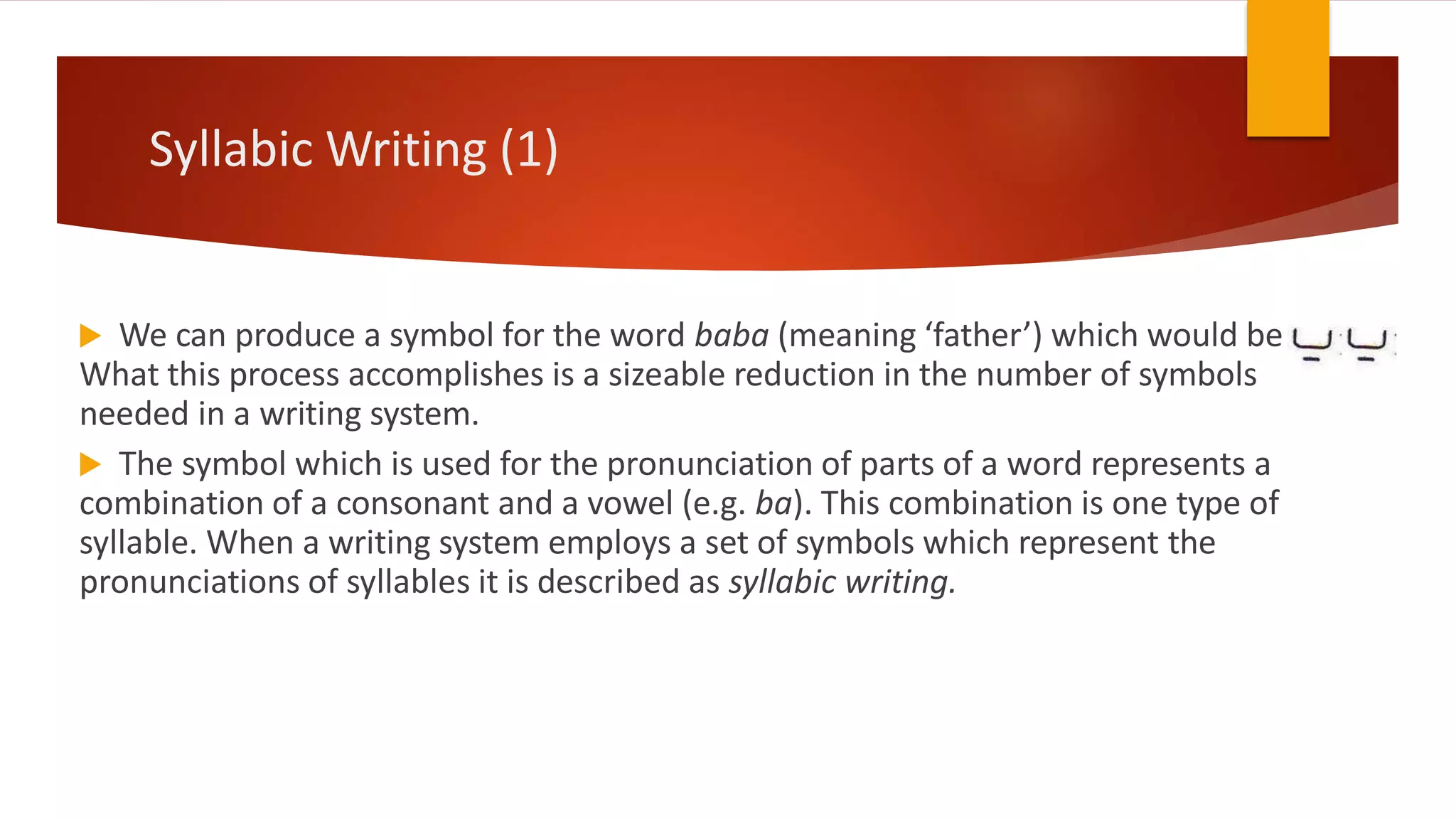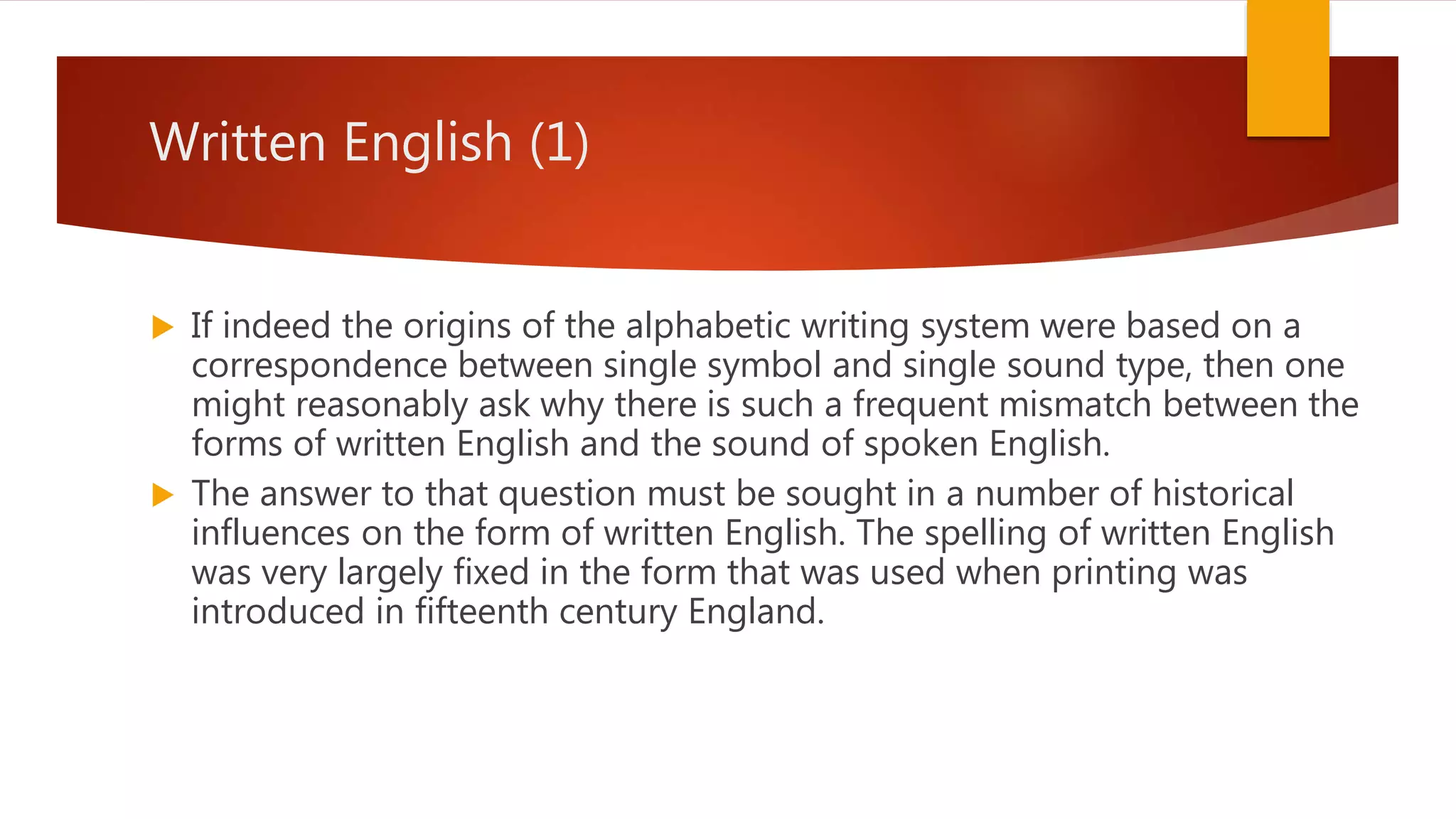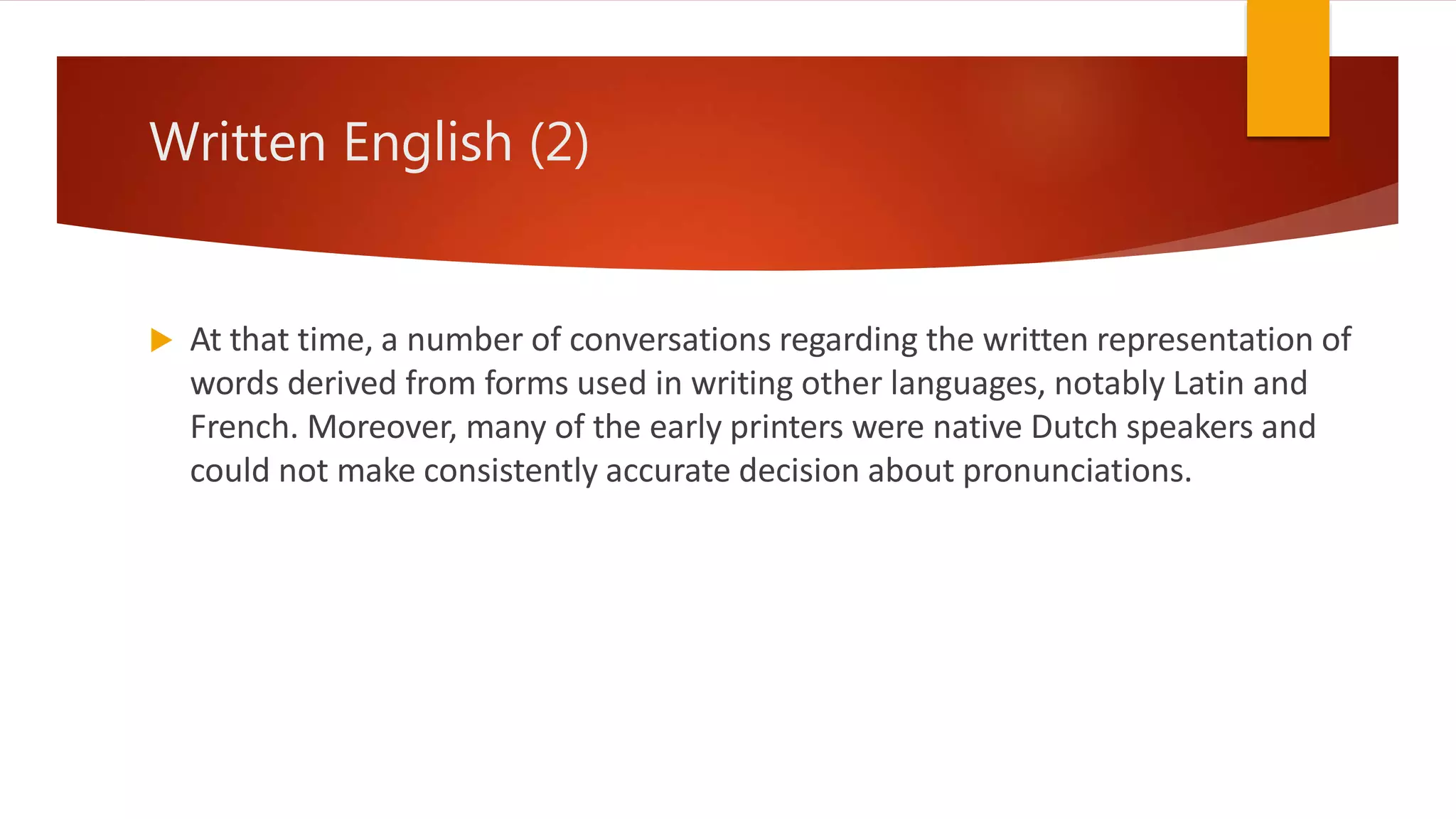1) Writing systems developed from early pictograms and ideograms into more advanced forms of logographic and syllabic writing.
2) One method for developing syllabic writing was through a process called "rebus writing" where symbols for sounds were used to represent words.
3) Many modern alphabets developed from early Semitic scripts where symbols represented consonant sounds and some vowels, moving towards true alphabetic writing with one symbol per phoneme.
4) The unusual spelling in modern English is largely due to fixing spelling based on historic forms from Latin and French, along with influence from early printers with non-English native languages.

